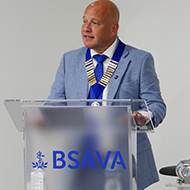‘Virtual rat’ could explain how brains control movement
The simulation could support studies into other neural circuits and how they respond to disease.
Researchers from Harvard University have created a virtual rodent, with an artificial brain capable of moving its body.
In collaboration with Google’s DeepMind artificial intelligence (AI) laboratory, the scientists trained its artificial neural network to control a virtual body in a physics simulator.
The AI model is expected to support neuroscientists with their understanding of how the brain is able to learn and control movement. Developing upon this AI simulation, researchers may be able to study other neural circuits, and how they can be compromised by disease.
The virtual rat was built using high-resolution data gathered from the brain activity of real rats, which the scientists used to train the artificial neural network. In time the ‘brain’ proved able to control a virtual body in the physics simulator MuJoco, even when acted upon by gravity and other forces.
It is the result of significant advancement in deep reinforcement learning, AI and the 3D movement tracking of animals.
The simulated neural network can now be fed a reference trajectory for a movement, and learn how to produce the forces necessary to perform it. It could also imitate a range of behaviours, even if it had not been explicitly trained to do so.
This combination of AI technology and neuroscience context will provide new insights into how animals behave and the brain functions.
Through the development of a virtual rat, future experiments in neuroscience could result in other AI-simulated animals which can act like real ones.
The scientists are now considering the possibility of giving their virtual rat autonomy to solve tasks, similar to those encountered by real rats. This could explain how learning algorithms are implemented to develop more skilled behaviours.
Bence Ölveczky, professor in the Department of Organismic and Evolutionary Biology at Harvard University, said: "From our experiments, we have a lot of ideas about how such tasks are solved, and how the learning algorithms that underlie the acquisition of skilled behaviours are implemented,
"We want to start using the virtual rats to test these ideas and help advance our understanding of how real brains generate complex behaviour."
The full study can be found in the journal Nature.
Image © Shutterstock



 Julian Hoad has been confirmed as the new president of the British Small Animal Veterinary Association (BSAVA), taking over from Carl Gorman.
Julian Hoad has been confirmed as the new president of the British Small Animal Veterinary Association (BSAVA), taking over from Carl Gorman.